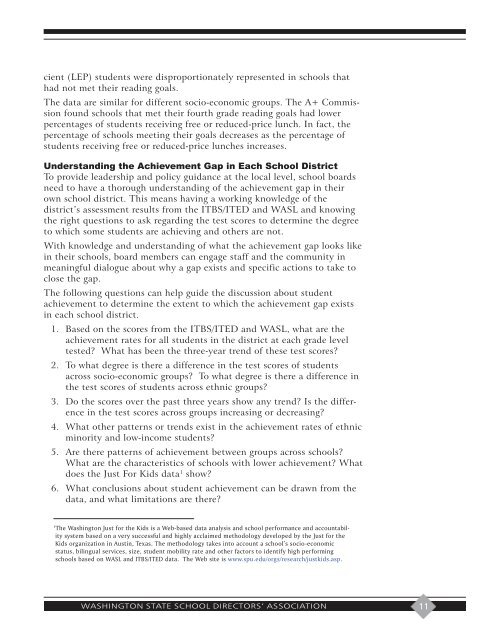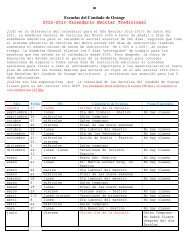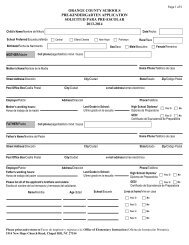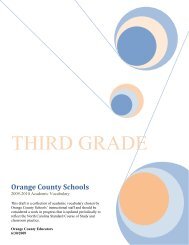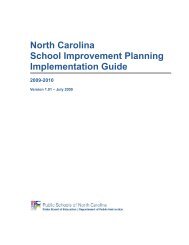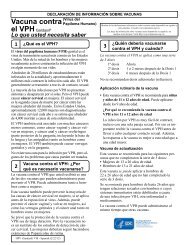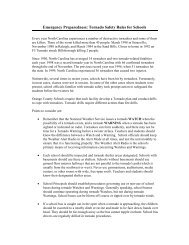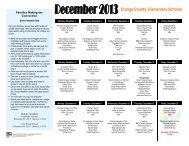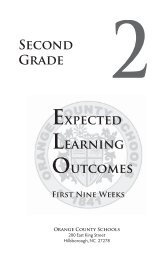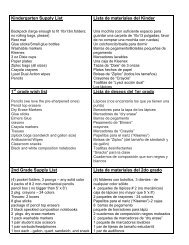Closing the Achievement Gap - Washington State School Directors ...
Closing the Achievement Gap - Washington State School Directors ...
Closing the Achievement Gap - Washington State School Directors ...
Create successful ePaper yourself
Turn your PDF publications into a flip-book with our unique Google optimized e-Paper software.
cient (LEP) students were disproportionately represented in schools thathad not met <strong>the</strong>ir reading goals.The data are similar for different socio-economic groups. The A+ Commissionfound schools that met <strong>the</strong>ir fourth grade reading goals had lowerpercentages of students receiving free or reduced-price lunch. In fact, <strong>the</strong>percentage of schools meeting <strong>the</strong>ir goals decreases as <strong>the</strong> percentage ofstudents receiving free or reduced-price lunches increases.Understanding <strong>the</strong> <strong>Achievement</strong> <strong>Gap</strong> in Each <strong>School</strong> DistrictTo provide leadership and policy guidance at <strong>the</strong> local level, school boardsneed to have a thorough understanding of <strong>the</strong> achievement gap in <strong>the</strong>irown school district. This means having a working knowledge of <strong>the</strong>district’s assessment results from <strong>the</strong> ITBS/ITED and WASL and knowing<strong>the</strong> right questions to ask regarding <strong>the</strong> test scores to determine <strong>the</strong> degreeto which some students are achieving and o<strong>the</strong>rs are not.With knowledge and understanding of what <strong>the</strong> achievement gap looks likein <strong>the</strong>ir schools, board members can engage staff and <strong>the</strong> community inmeaningful dialogue about why a gap exists and specific actions to take toclose <strong>the</strong> gap.The following questions can help guide <strong>the</strong> discussion about studentachievement to determine <strong>the</strong> extent to which <strong>the</strong> achievement gap existsin each school district.1. Based on <strong>the</strong> scores from <strong>the</strong> ITBS/ITED and WASL, what are <strong>the</strong>achievement rates for all students in <strong>the</strong> district at each grade leveltested? What has been <strong>the</strong> three-year trend of <strong>the</strong>se test scores?2. To what degree is <strong>the</strong>re a difference in <strong>the</strong> test scores of studentsacross socio-economic groups? To what degree is <strong>the</strong>re a difference in<strong>the</strong> test scores of students across ethnic groups?3. Do <strong>the</strong> scores over <strong>the</strong> past three years show any trend? Is <strong>the</strong> differencein <strong>the</strong> test scores across groups increasing or decreasing?4. What o<strong>the</strong>r patterns or trends exist in <strong>the</strong> achievement rates of ethnicminority and low-income students?5. Are <strong>the</strong>re patterns of achievement between groups across schools?What are <strong>the</strong> characteristics of schools with lower achievement? Whatdoes <strong>the</strong> Just For Kids data 1 show?6. What conclusions about student achievement can be drawn from <strong>the</strong>data, and what limitations are <strong>the</strong>re?1The <strong>Washington</strong> Just for <strong>the</strong> Kids is a Web-based data analysis and school performance and accountabilitysystem based on a very successful and highly acclaimed methodology developed by <strong>the</strong> Just for <strong>the</strong>Kids organization in Austin, Texas. The methodology takes into account a school’s socio-economicstatus, bilingual services, size, student mobility rate and o<strong>the</strong>r factors to identify high performingschools based on WASL and ITBS/ITED data. The Web site is www.spu.edu/orgs/research/justkids.asp.WASHINGTON STATE SCHOOL DIRECTORS’ ASSOCIATION11


